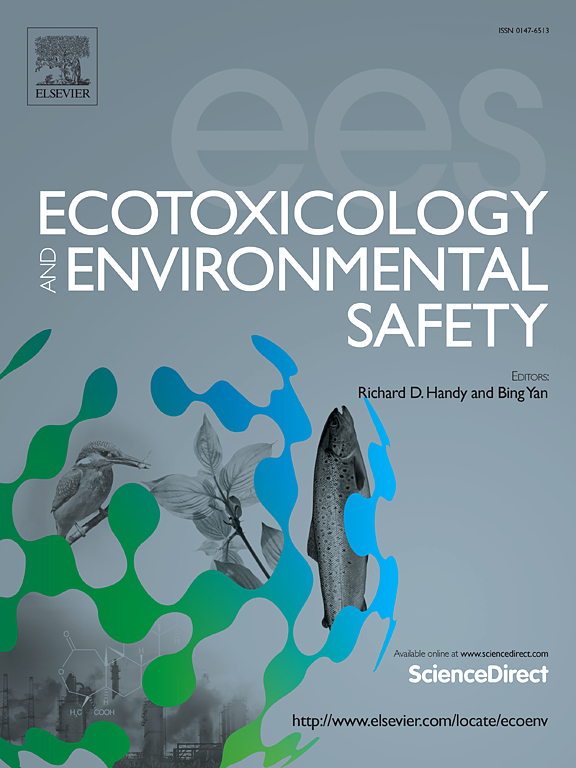枸杞多糖通过调节自噬保护 BMSCs 免受镉诱导的成骨分化抑制
IF 6.2
2区 环境科学与生态学
Q1 ENVIRONMENTAL SCIENCES
引用次数: 0
摘要
镉(Cd)是一种在生物体内蓄积的重金属污染物,具有骨毒性,可导致骨质疏松症。枸杞多糖是从中药植物枸杞中提取的一种多糖,对氧化应激和细胞损伤具有保护作用。然而,枸杞多糖能否有效抑制镉诱导的骨毒性尚不清楚。本研究探讨了枸杞多糖是否能通过自噬调节缓解 Cd 诱导的骨髓间充质干细胞(BMSCs)成骨抑制。研究采用 CCK-8、qPCR、Western 印迹和茜素红染色法评估了细胞活力、成骨标志物(ALP、BMP2、COL1、RUNX2)和矿化度。自噬通量通过 GFP-mCherry-LC3B 转染和蛋白标记(LC3-II、P62、BECN)进行评估。我们证实,镉抑制了细胞自噬体的形成,同时对 BMSCs 产生了不利影响。然而,枸杞多糖通过刺激自噬过程、促进自噬体和自溶酶体的形成,缓解了镉诱导的成骨抑制作用。总之,枸杞多糖是一种潜在的骨增强剂,它能提高细胞活力和成骨分化能力,同时通过激活自噬作用减轻镉对 BMSCs 的不利影响。本文章由计算机程序翻译,如有差异,请以英文原文为准。
Lycium barbarum polysaccharide protects BMSCs against cadmium-induced suppression of osteogenic differentiation by modulating autophagy
Cadmium (Cd), a heavy metal pollutant that accumulates in organisms, is osteotoxic and contributing to the development of osteoporosis. Lycium barbarum polysaccharide (LBP), a polysaccharide obtained from the Chinese medicinal plant Lycium barbarum, exhibits protective effects against oxidative stress and cellular damage. However, it is unclear whether LBP can effectively inhibit Cd-induced osteotoxicity. This study investigated whether LBP alleviates Cd-induced osteogenic suppression in bone marrow mesenchymal stem cells (BMSCs) via autophagy modulation. Cell viability, osteogenic markers (ALP, BMP2, COL1, RUNX2), and mineralization were assessed using CCK-8, qPCR, Western blot, and alizarin red staining. Autophagy flux was evaluated via GFP-mCherry-LC3B transfection and protein markers (LC3-II, P62, BECN). We confirmed that Cd inhibited the formation of cellular autophagosomes while adversely affecting BMSCs. However, LBP mitigated the Cd-induced osteogenic inhibitory effect by stimulating the autophagy processes and facilitating the formation of autophagosomes and autolysosomes. In conclusion, LBP is a potential bone-enhancing agent that can improve cell viability and osteogenic differentiation while mitigating the detrimental effects of Cd on BMSCs through the activation of autophagy.
求助全文
通过发布文献求助,成功后即可免费获取论文全文。
去求助
来源期刊
CiteScore
12.10
自引率
5.90%
发文量
1234
审稿时长
88 days
期刊介绍:
Ecotoxicology and Environmental Safety is a multi-disciplinary journal that focuses on understanding the exposure and effects of environmental contamination on organisms including human health. The scope of the journal covers three main themes. The topics within these themes, indicated below, include (but are not limited to) the following: Ecotoxicology、Environmental Chemistry、Environmental Safety etc.

 求助内容:
求助内容: 应助结果提醒方式:
应助结果提醒方式:


